The Monument Makers: Where Art Meets Autocracy Inside North Korea's Largest "Art" Studio
Step inside Mansudae, North Korea's colossal art factory, where imposing Kim dynasty sculptures and grand monuments are made. Its work begs the question: where does artistry end, and propaganda begin?
📍 Pyongyang, North Korea
Picture an art studio sprawling across an area the size of 17 football fields – that's Pyongyang's Mansudae. Its 4,000 state-sponsored artists work within a complex resembling a university campus, complete with cafeterias, sports fields, and saunas. Here, artistic expression takes a backseat to meticulously crafted propaganda for domestic consumption. Yet, Mansudae's influence isn't confined by borders. Its “Overseas Project Group” exports both artists and artworks, leaving its mark on plazas and ministries from Angola to Zimbabwe. This hyper-nationalist art factory forces a fundamental question: where does artistic expression end, and propaganda begin?
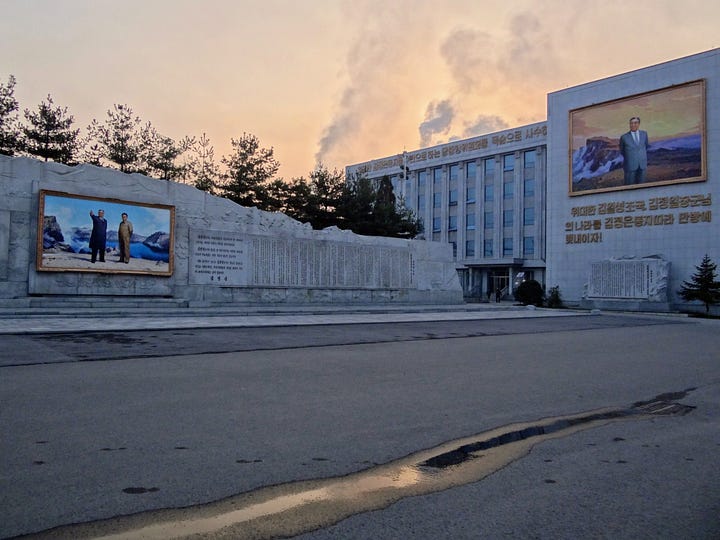
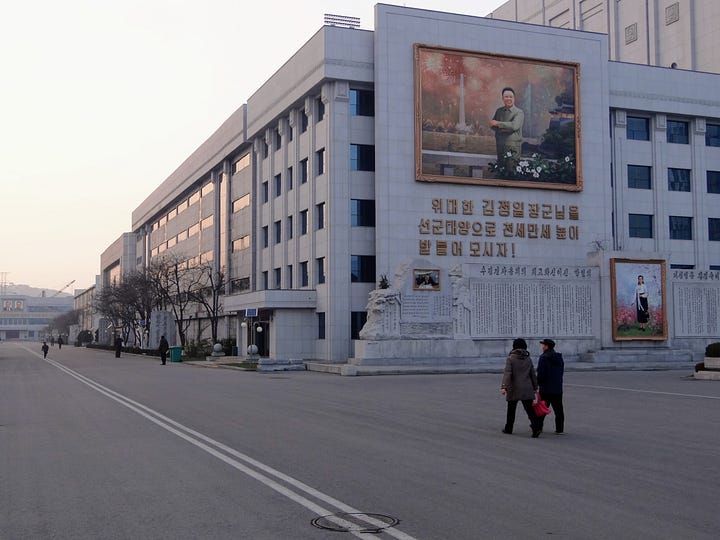
The line between art and propaganda depends on where you stand. Propaganda has a clear goal: to persuade. Mansudae's boldest works promote “juche,” North Korea's philosophy of extreme self-sufficiency. These paintings and sculptures tell tales of heroic battles against the Japanese (ignoring a little help from the Soviets) and the glorious rise of a workers' paradise under the Kims. At Mansudae, the state sets the story, and the artists find ways to make it visually compelling. It's not a new trick – think grand portraits of European kings designed to awe the peasants.
Walking though the studios, I felt that Mansudae itself is a monument to the very idea of a monument. The regime is the heart of North Korea, the military its might, and Mansudae its face. Art here isn't about self-expression, it's about cohesion. These colossal paintings and statues aren't meant to spark introspection, but to serve as a visual handbook for the ideal North Korean citizen. Much like the education system and state-controlled media, Mansudae hammers home the regime's message with relentless repetition: slogans, imagery, and themes all designed to equip citizens with the vocabulary and vision of a perfect socialist utopia, one where unquestioning loyalty to the Kim dynasty is paramount.
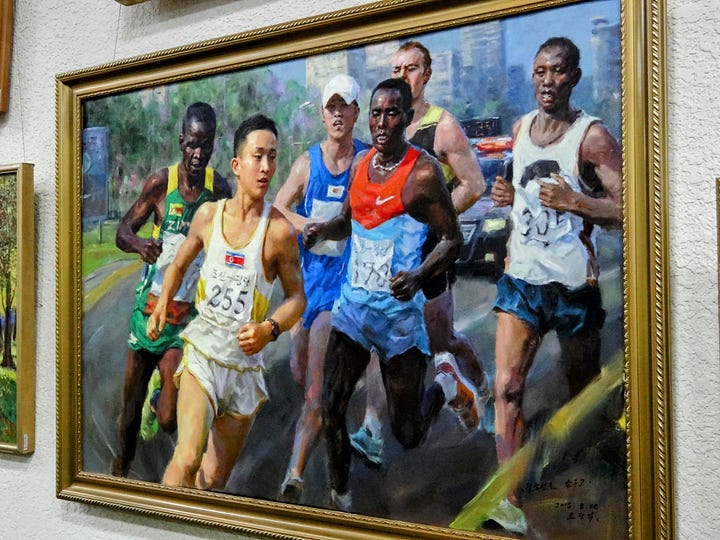
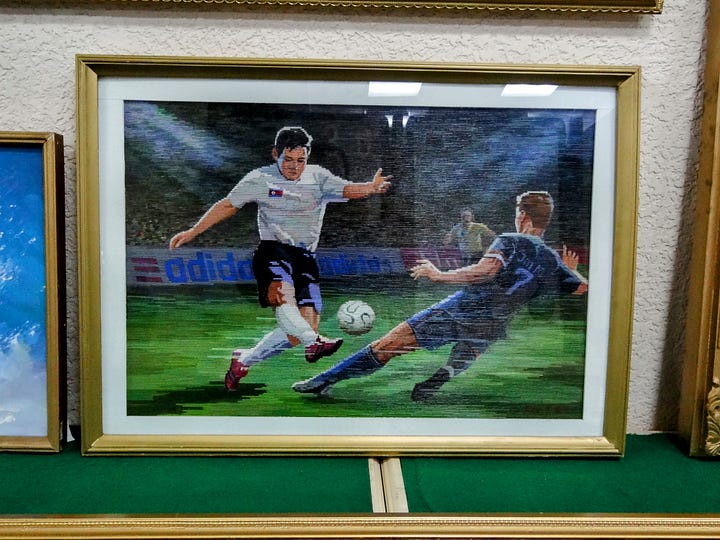
For art to function as the regime's ideological handmaiden, it must be clear and easily understood. Mansudae’s artists prioritize a recognizable, enhanced reality over individual imagination. This is seen in the countless bronze statues of Kim Il Sung and Kim Jong Il, or Pyongyang's monumental tribute to the Korean War. Mansudae isn't meant to be a space for free expression; it incubates the juche ideology. Works avoid ambiguity, instead reinforcing the party line with unwavering clarity. However, Mansudae artists aren't mere copyists. They imbue their work with a subtle perspective, aiming to encapsulate a historical narrative within a single, visually striking image.
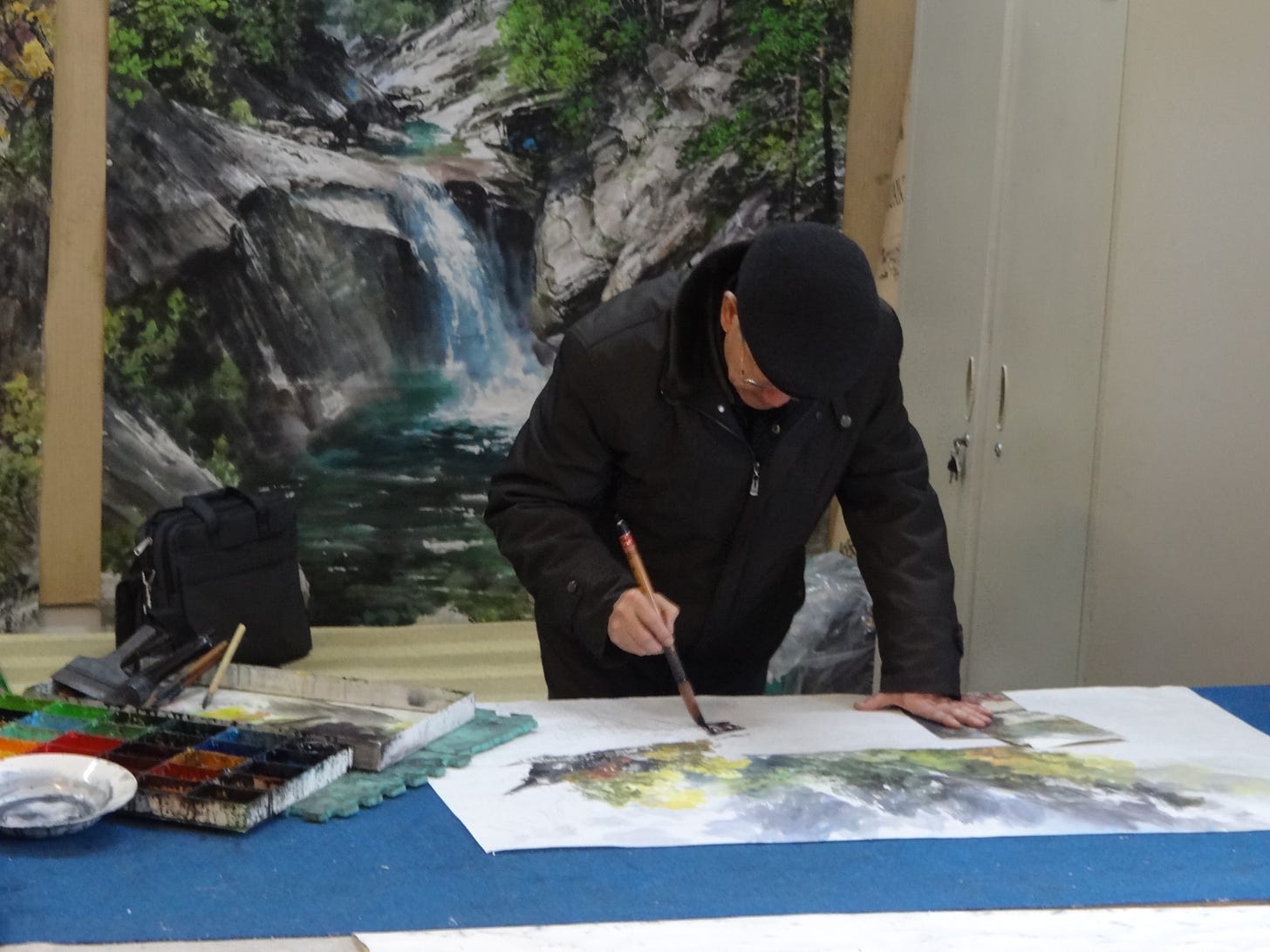
Mansudae acts as the regime's velvet glove to its iron fist—a complement to North Korea's colossal military, the world's fourth-largest after China, India, and the U.S. Inside the country, themed paintings function as motivational posters that motivate workers with idealized scenes of socialist bliss. Abroad, Mansudae's “Overseas Project Group” leaves its often-unnoticed footprint in over 50 countries across Africa, the Middle East, and even Europe. These bespoke monuments cater to a range of ideologies, allowing North Korea to etch its name on the global stage, one airbrushed strongman at a time. More importantly, the OGP fuels the regime's coffers, a crucial revenue stream for a nation under sanctions and with a penchant for nuclear pursuits and other equally newsworthy endeavors.
Think of Mansudae as the hammer and sickle's answer to New York’s Madison Avenue. Here, art isn't about consumerism, it's about cultivating unwavering loyalty to the Kim dynasty and its autarkic juche ideology. Mansudae produces propaganda, yes – but propaganda wielded with undeniable skill and a commitment to visual storytelling that transcends mere slogans. It leaves you pondering the slippery nature of art: Is it mere beauty, or can it be the polished face of the powerful? Does it have to be a force for liberation, or can it be the opiate of the masses? I don't have the answers, and I'm not sure Mansudae does either. But for anyone wondering about the power of the image, about art's ability to both reflect and shape our world, this place isn't just a curiosity – it's a plunge into the mind of the world’s most enigmatic country.





